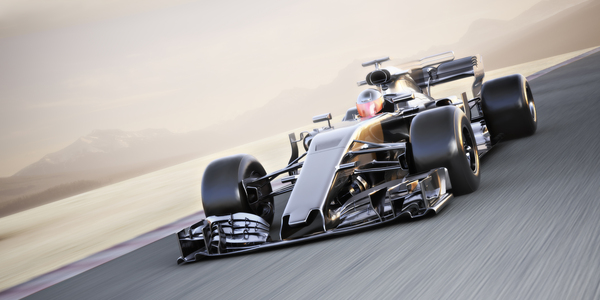Million dollar simulators for racers
Formula 1 teams and racers have grand facilities worth up to $4.5 million at their disposal. These are not simple devices in small rooms, but truly massive structures – they build separate buildings for them or allocate gigantic areas at bases with connected telemetry, sensors, sensors and all other equipment. That is, this is not some small analog that can be placed in the corner of the base – no, it is really a massive and impressive structure. This is the first thing that distinguishes it from the usual analog that we, for example, use at our Academy.
The cockpit or body of the simulator car stands on a large movable platform, to which massive hydraulic legs are attached – they move the platform in different directions, create various rolls and rotational moments, so that the pilot experiences more or less believable sensations, as if he were driving a racing car.

Teams like Red Bull or Ferrari have simulators for racers that rotate 360 degrees in either direction, so you don’t feel interrupted in the generated g-force.
One of the main differences between super-expensive units is that the design uses a real monocoque (for example, from one of the old F-1 cars, or old cars from other series), steering wheel, petals and other cockpit elements, including pedals – which are located like this just like in a real car.
Unlike conventional purchased analogs, the pressure on the brake pedals is not created by a spring, but by a connected hydraulic system. Below, under the simulator, there is a brake disc – that is, a real brake system is recreated in the analog. And when you press the brake, just like in a real car, the pads compress the disc, and this process goes through the hydraulic system.
Why racers don’t like simulators
There is a downside to working with professional analog. Yes, at first glance, all this looks as realistic as possible, but in fact, if you dwell into what the racer actually feels on the track, everything is not quite right.
For example, at the beginning of acceleration, the platform must move in the opposite direction, thereby creating an overload. But you need to understand that if the straight line is short, then the acceleration lasts a second or two. Accordingly, the platform has the ability to move forward a few meters to create this load. And if we are talking about a situation where the pilot drives onto a long straight, which he has been driving in the acceleration phase for five seconds already, then it is clear that the platform cannot move forward during all these five seconds and thereby create the necessary overload for the racer.
The same applies to decelerations – they just last less in time and, as a rule, the disadvantage is not so noticeable. In corners, this is felt to a lesser extent, because there are almost no such long turns, but this also manifests itself in the longest corners. Or if in such a place you start to skid, and this requires additional adjustments to the steering wheel.
Does the simulator play overload during departure
Yes, as a rule, after some kind of departure, they begin to do this, but when the car in the analog starts moving faster than the values available to the platform, it simply turns off. And sometimes it can turn off and then it does not turn off at all.
Do simulators help in driving a real car
We cannot say that they definitely help or harm for sure – there is no such thing here. Much depends on the racer – on who knows how to rebuild between the analog and the real car.
